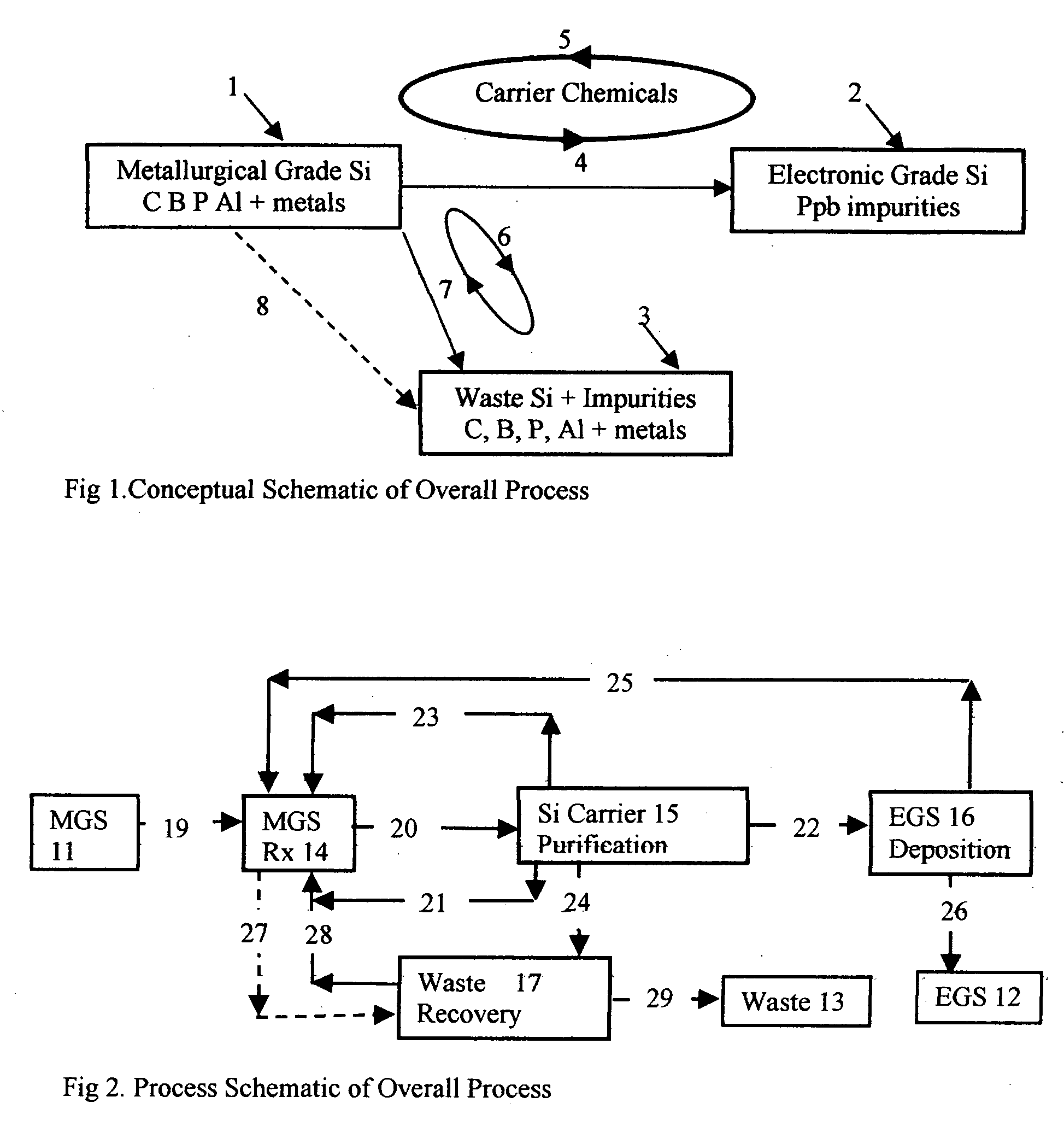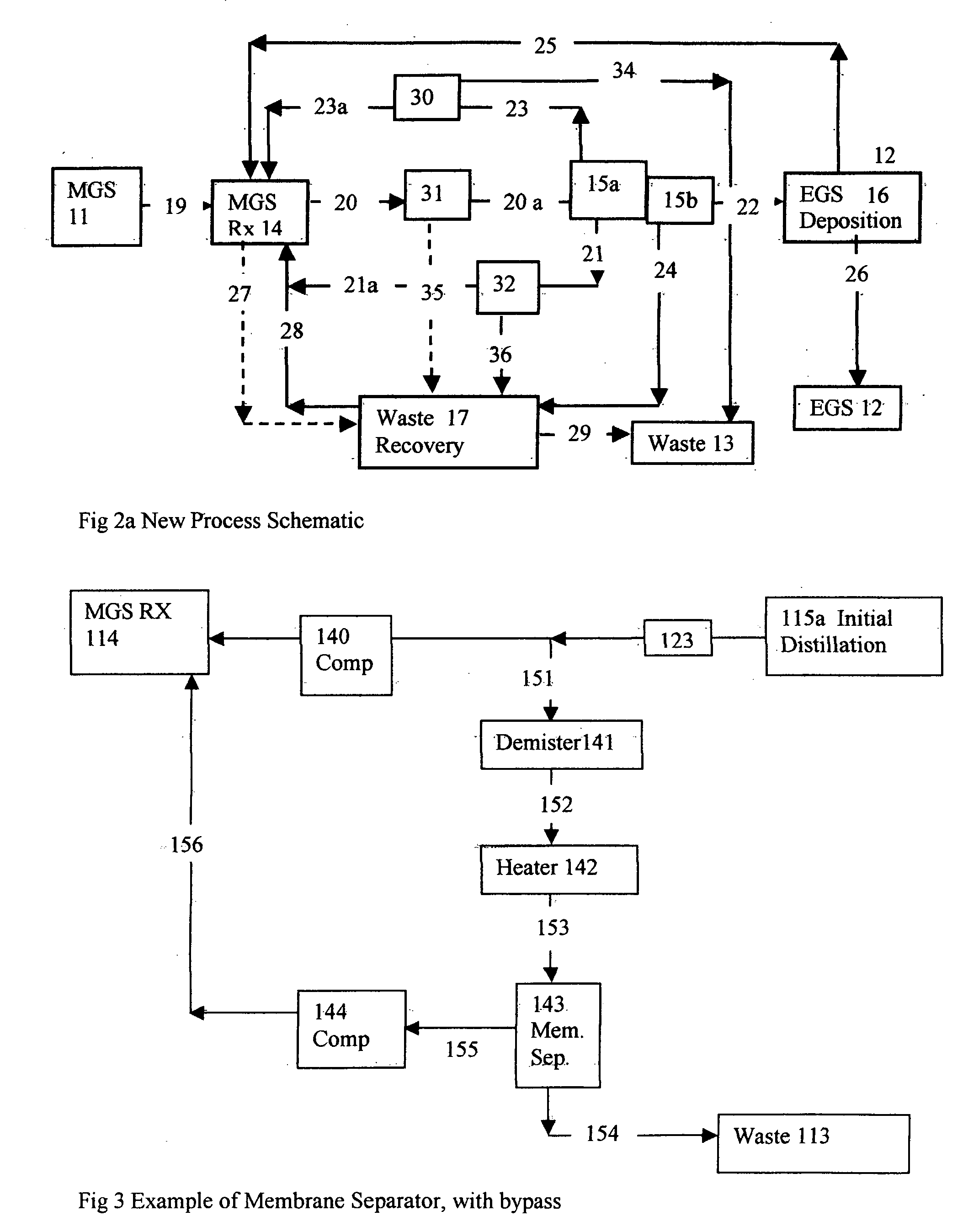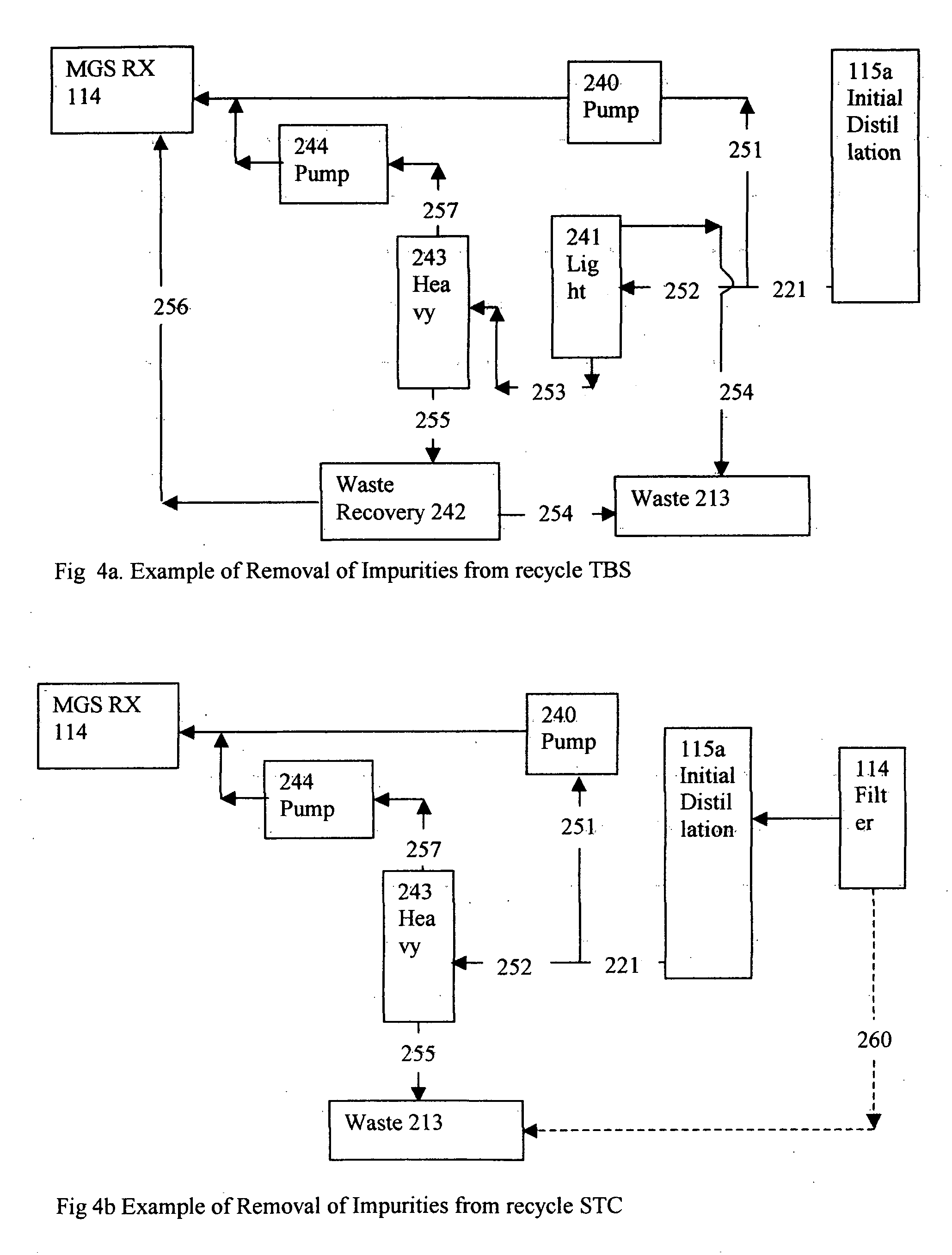Set of processes for removing impurities from a silcon production facility
a technology of silcon production and process, applied in the direction of separation process, silicon compound, energy input, etc., can solve the problems of proposed distillation scheme failure, ingle distilling all of recycled sicl, etc., and achieves the effect of not required or optimal, and not providing for solid aluminum trichlorid
- Summary
- Abstract
- Description
- Claims
- Application Information
AI Technical Summary
Problems solved by technology
Method used
Image
Examples
examples
[0046] 1A gas stream is to be produced from a degassing column at a composition of 3.5 SCFH H2SiCl2;2.4 SCFH HSiCl3;51.5 HCl; 5407.5 H2;095 CH4 and 0.005 SCFH PH3 for a total of 5465 SCFH at a pressure of 470 psig and a temperature of 125 F(51° C.). The gas will be demisted in a demisting pad and reheated to 140 F(60° C.) and reduced in pressure to 400 psig then passed through a separator using a polysulfone membrane. The low-pressure stream will be produced at 25 psig with a composition of 0.1 SCFH H2SiCl2;0.1 SCFH HSiCl3;45 HCl; 4865 H2;005 CH4 and 0.001 SCFH PH3 for a total of 4910 SCFH (approx), the high pressure stream will be produced at 380 psig with a composition of 3.4 SCFH H2SiCl2;2.3 SCFH HSiCl3;6.5 HCl; 542.5 H2; 09 CH4 and 0.004 SCFH PH3 for a total of 555 SCFH (approx). Thus about 90% of the hydrogen and hydrogen chloride are recovered to the low-pressure stream and 90% of the methane and 80% of the phosphine are recovered to the high-pressure stream along with most of...
PUM
| Property | Measurement | Unit |
|---|---|---|
| Temperature | aaaaa | aaaaa |
| Temperature | aaaaa | aaaaa |
| Temperature | aaaaa | aaaaa |
Abstract
Description
Claims
Application Information
 Login to View More
Login to View More - R&D
- Intellectual Property
- Life Sciences
- Materials
- Tech Scout
- Unparalleled Data Quality
- Higher Quality Content
- 60% Fewer Hallucinations
Browse by: Latest US Patents, China's latest patents, Technical Efficacy Thesaurus, Application Domain, Technology Topic, Popular Technical Reports.
© 2025 PatSnap. All rights reserved.Legal|Privacy policy|Modern Slavery Act Transparency Statement|Sitemap|About US| Contact US: help@patsnap.com



